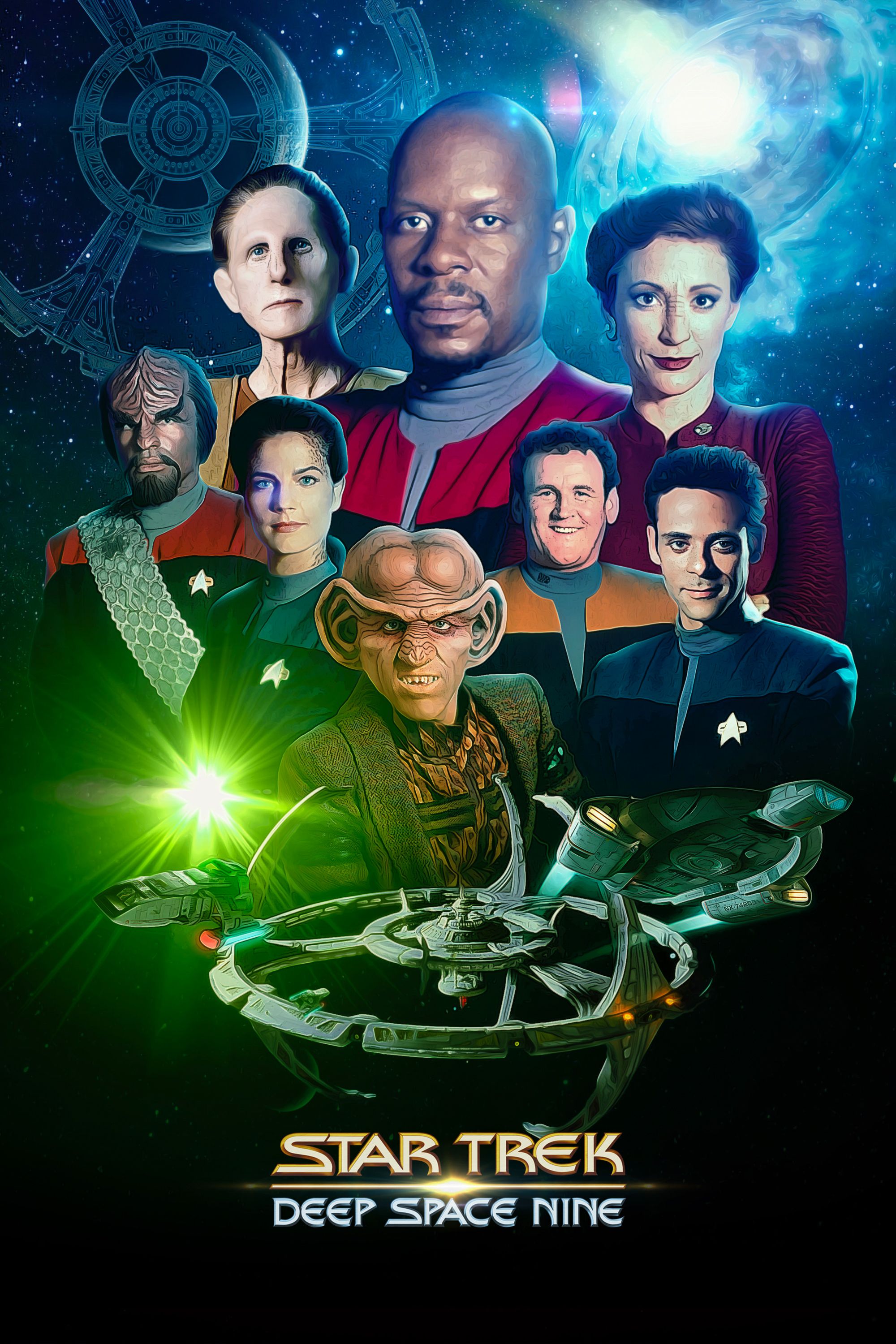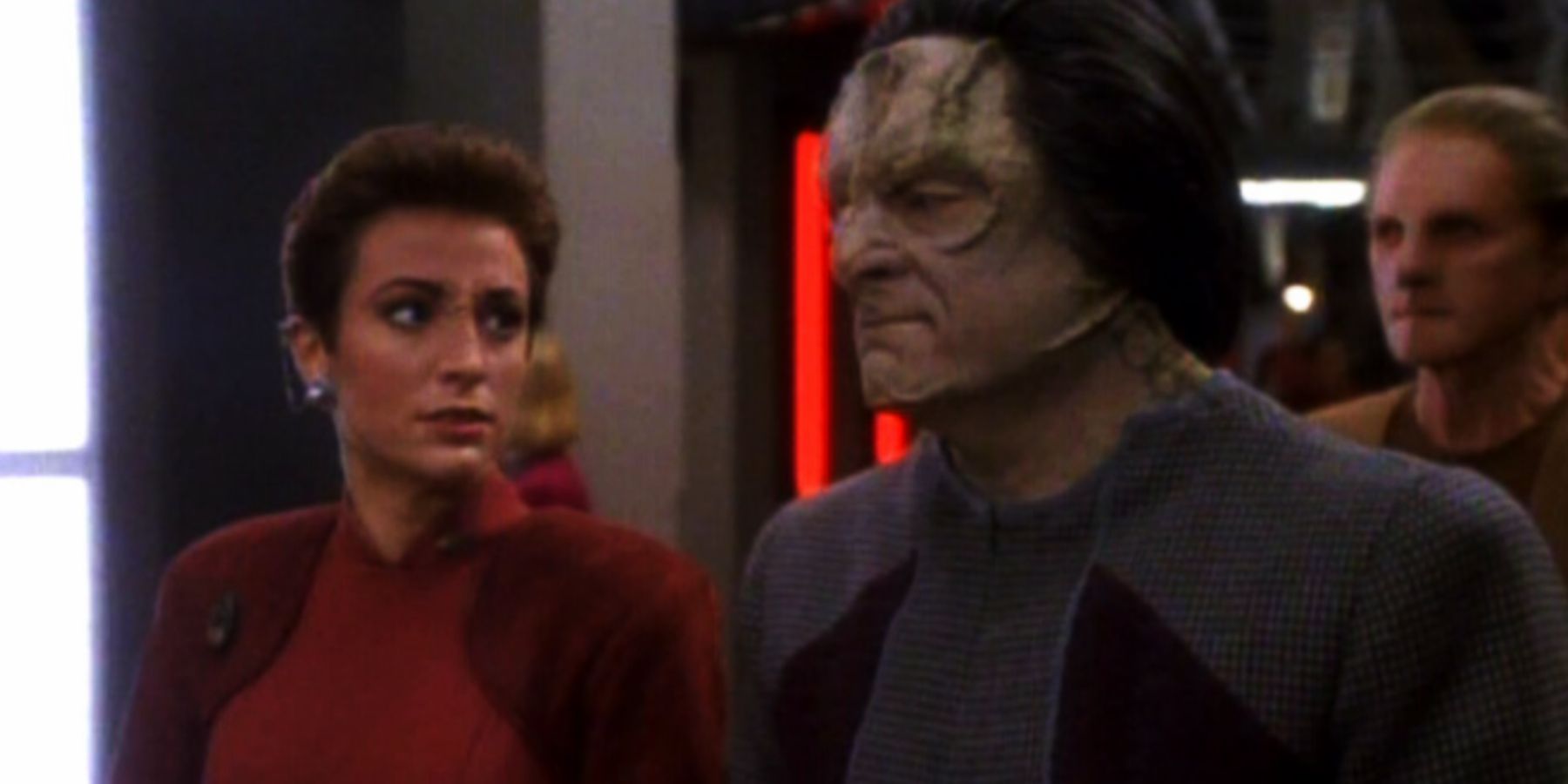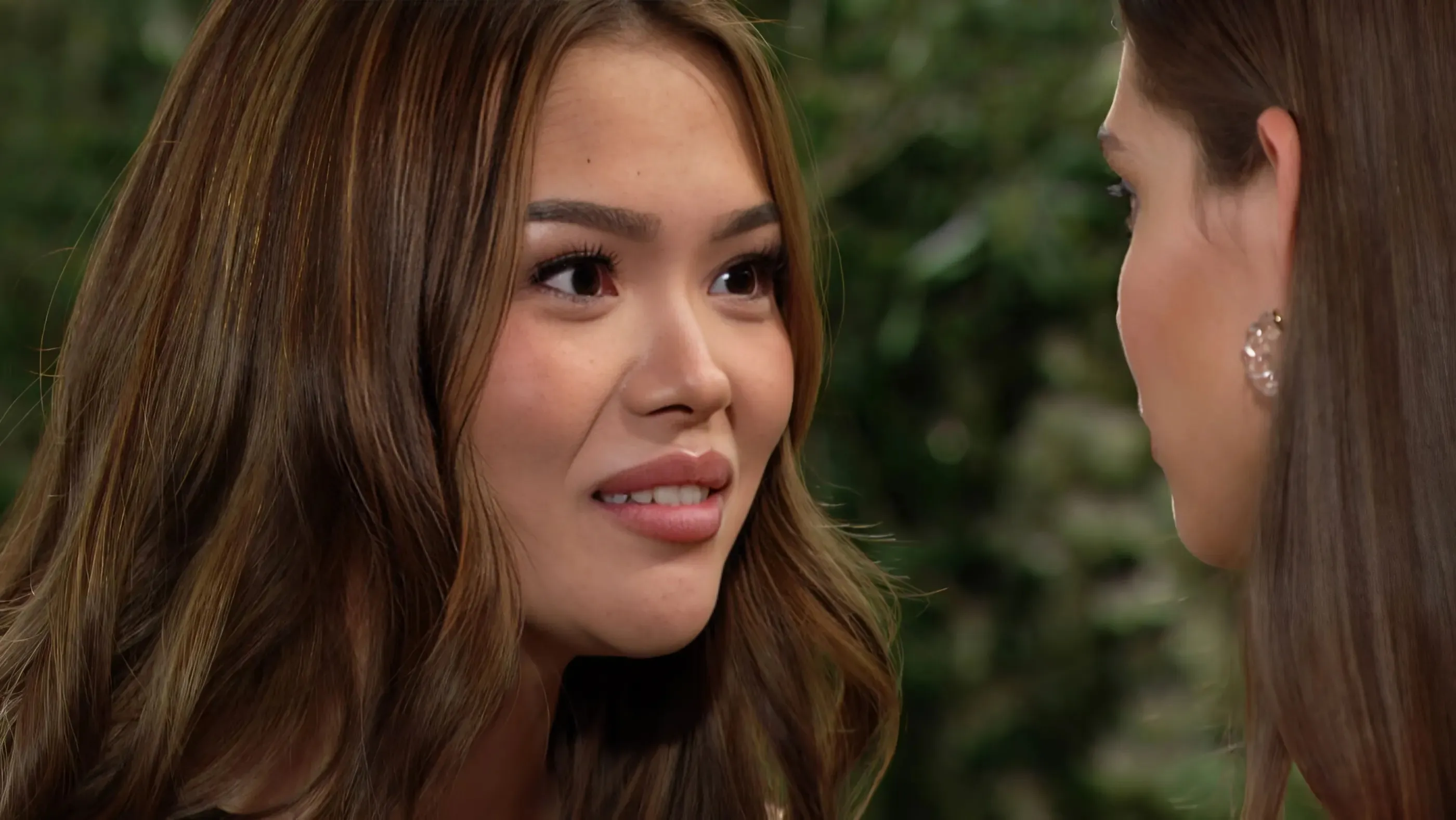Sign in to your ScreenRant account
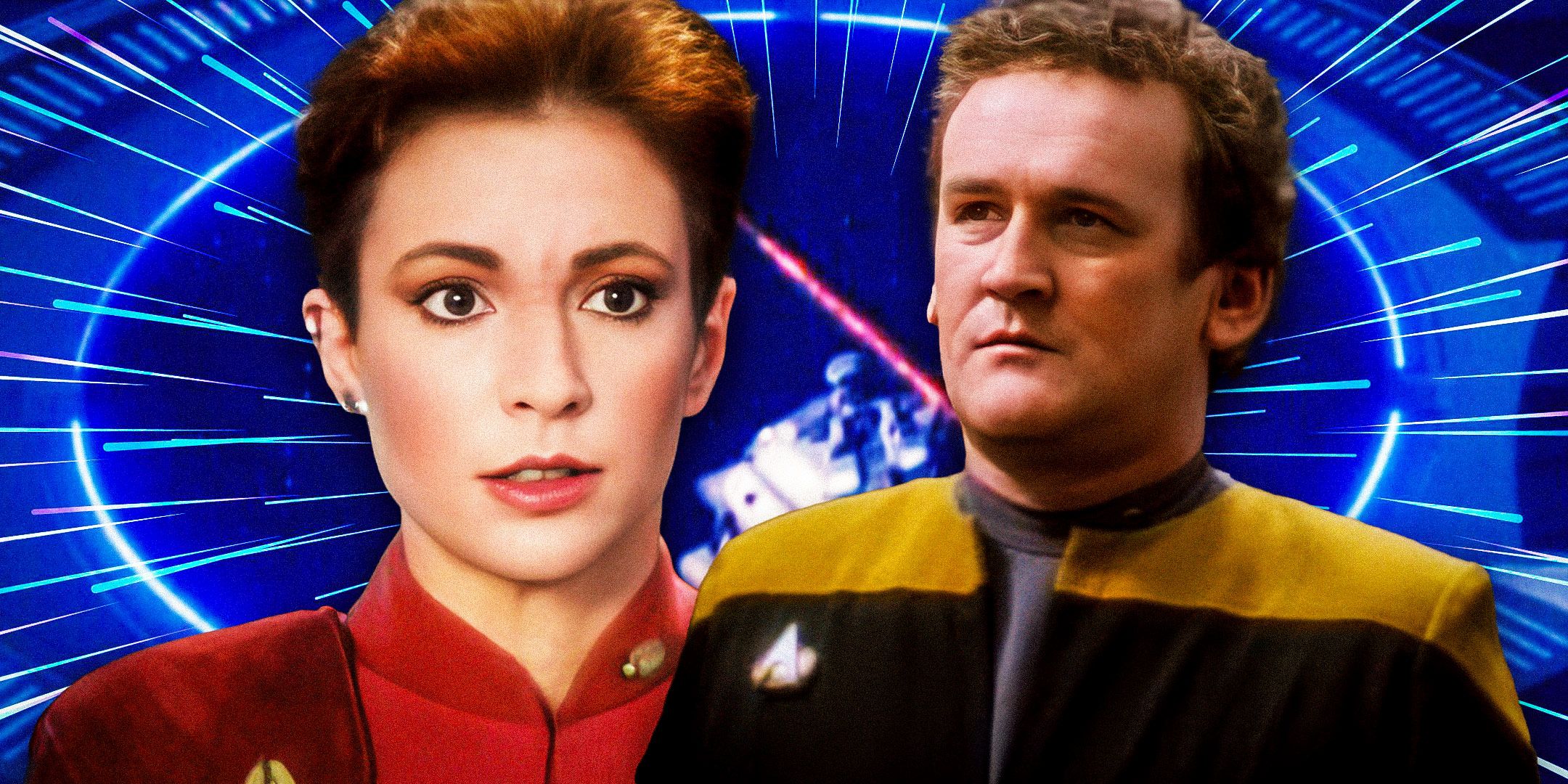
Before Star Trek: Deep Space Nine, Star Trek shows relegated faith and religion to concepts humanity had overcome in the future, but Star Trek: Deep Space Nine's first season is all about faith. Through the station's melting pot of cultures, DS9 explores how the stories that we tell ourselves—and each other—shape what we believe to be true. The best episodes of Deep Space Nine season 1 put Star Trek: Deep Space Nine's characters in unforeseen situations that will either challenge or reinforce their beliefs, while hinting at the serialization and deep character studies that would later define DS9.
10 Star Trek: Deep Space Nine Season 1, Episode 8 - "Dax"
DS9's Trill Are Different, And Jadzia Is Not Curzon
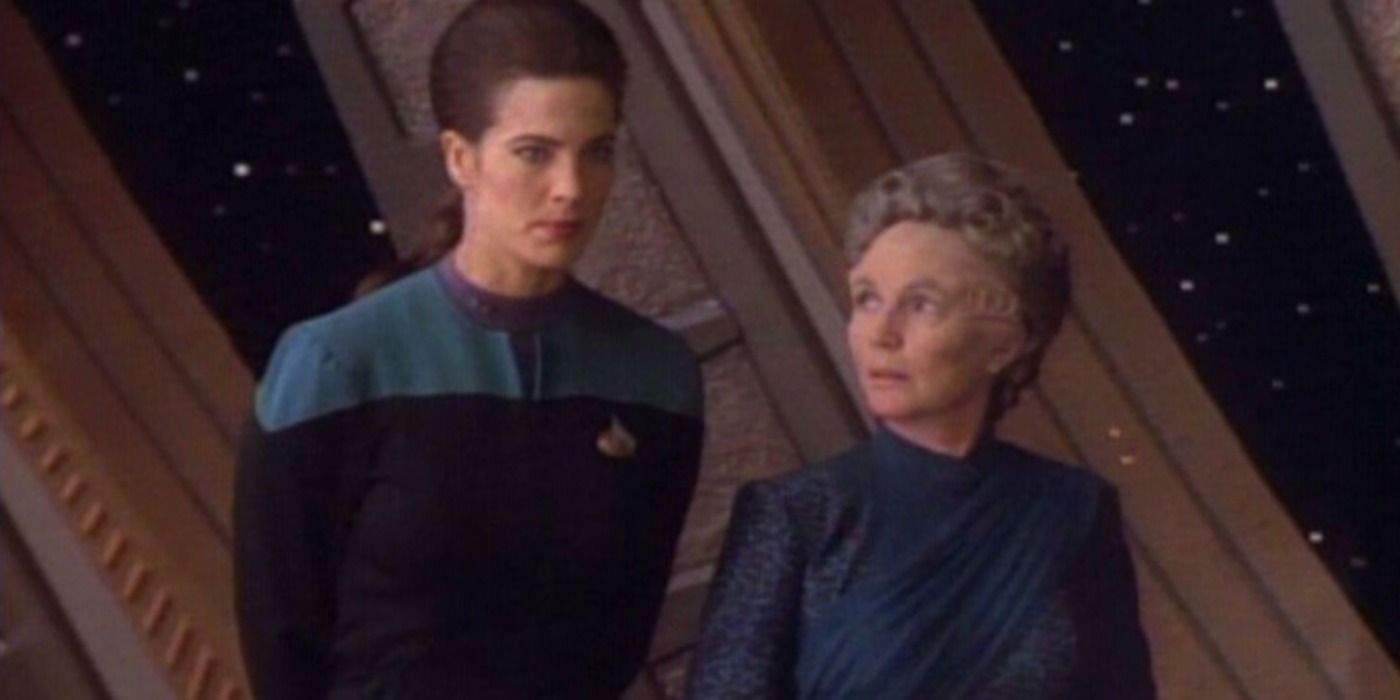
The hearing in Star Trek: Deep Space Nine season 1, episode 8, "Dax", seeks to determine whether Lieutenant Jadzia Dax (Terry Farrell) is actually responsible for a crime that Curzon Dax allegedly committed. It's a clever way to use the courtroom as a narrative device that explains how Deep Space Nine's Trill are different from Star Trek: The Next Generation's Trill, whose symbionts buried the hosts' personalities completely. There are some solid moments for Constable Odo (Rene Auberjonois), too, who does his best to absolve Jadzia of Curzon's mistakes with a thorough investigation.
"Dax" may not be as tightly-woven as other Star Trek courtroom episodes, but its strength is in spotlighting Lieutenant Dax as a character. Even though Jadzia Dax hasn't become the more boisterous version of herself that we'll come to know later, other important aspects of Dax's character are introduced here, like steadfast loyalty, integrity, and gender fluidity. Jadzia may not be legally bound to the things that Curzon did, but she will honor his promises from one life into the next, which is consistent with Dax's promises to the Klingons in DS9's 4th season.
9 Star Trek: Deep Space Nine Season 1, Episode 17 - "The Forsaken"
Odo & Lwaxana Troi Drop Pretenses In A Turbolift
How you feel about Star Trek: Deep Space Nine season 1, episode 17, "The Forsaken" may depend on how you feel about Lwaxana Troi (Majel Barrett-Roddenberry), but I think this episode does a fantastic job of recontextualizing Lwaxana as her own character. Lwaxana and Constable Odo are surprising, fantastic foils for one another throughout the episode, with Lwaxana advancing and Odo rebuffing, both true to form. But the real beauty of "The Forsaken" happens after Lwaxana and Odo get stuck in a turbolift together.
Yes, it's a well-worn story trope, but "stuck in an elevator" actually works to reveal what's hiding beneath both Odo and Lwaxana's carefully crafted public guises. Between Odo's shapeshifted form and Lwaxana's favorite hair, both are able to admit that they're putting on a show for the outside world. For someone who's rarely honest with himself, being honest with another person is almost impossible for Odo. But the long, elapsed time in the turbolift means Odo has to revert to his gelatinous state, which is a great metaphor for broken barriers between these unlikely friends.
8 Star Trek: Deep Space Nine Season 1, Episode 15 "Progress"
Kira Grapples With The Other Side Of Rebellion
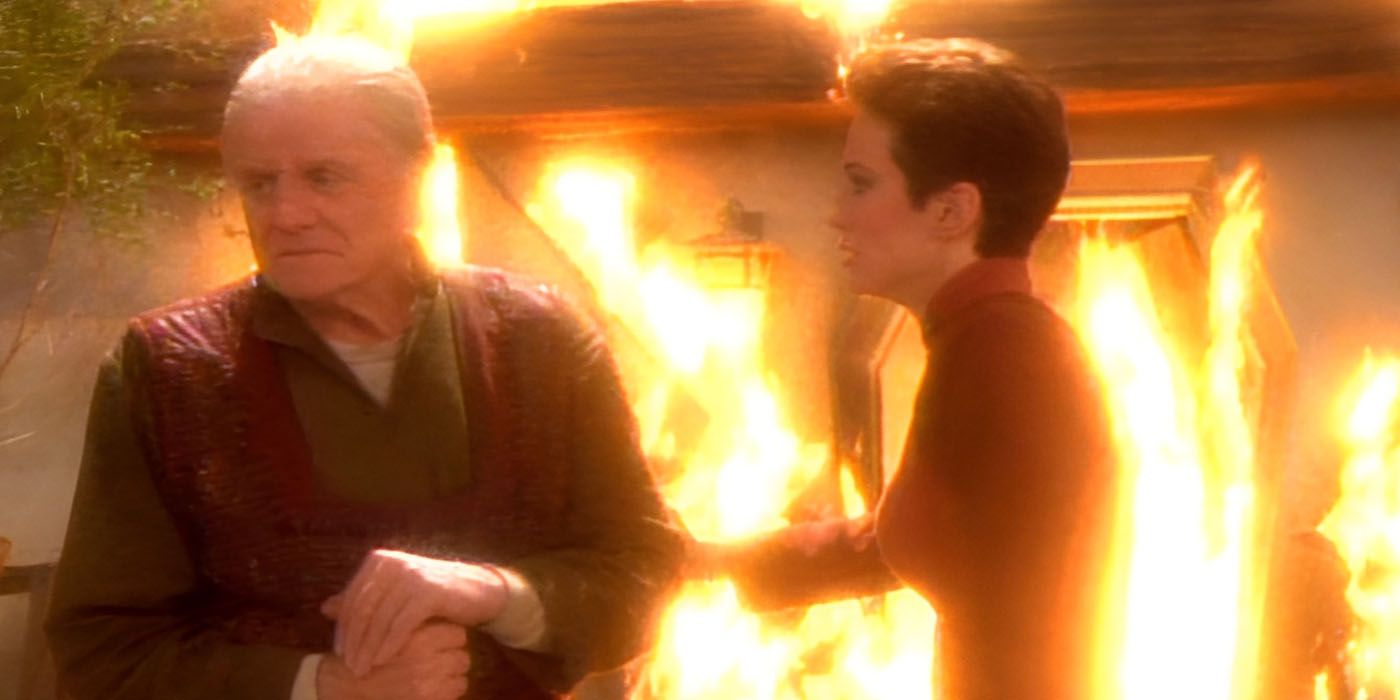
Kira learns that actually governing is much harder than the ease of righteous anger.
While Kira learns that actually governing is much harder than the ease of righteous anger, "Progress" also has a fun B-story with Jake Sisko (Cirroc Lofton) and Nog (Aron Eisenberg) forming the "Noh-Jay Consortium". By bartering Cardassian yamok sauce, self-sealing stem bolts, and so on until they hit it big with a parcel of land, the boys' friendship grows even more than their latinum prospects.
7 Star Trek: Deep Space Nine Season 1, Episode 13 - "Battle Lines"
Kira's Fight Is Both Within And Without
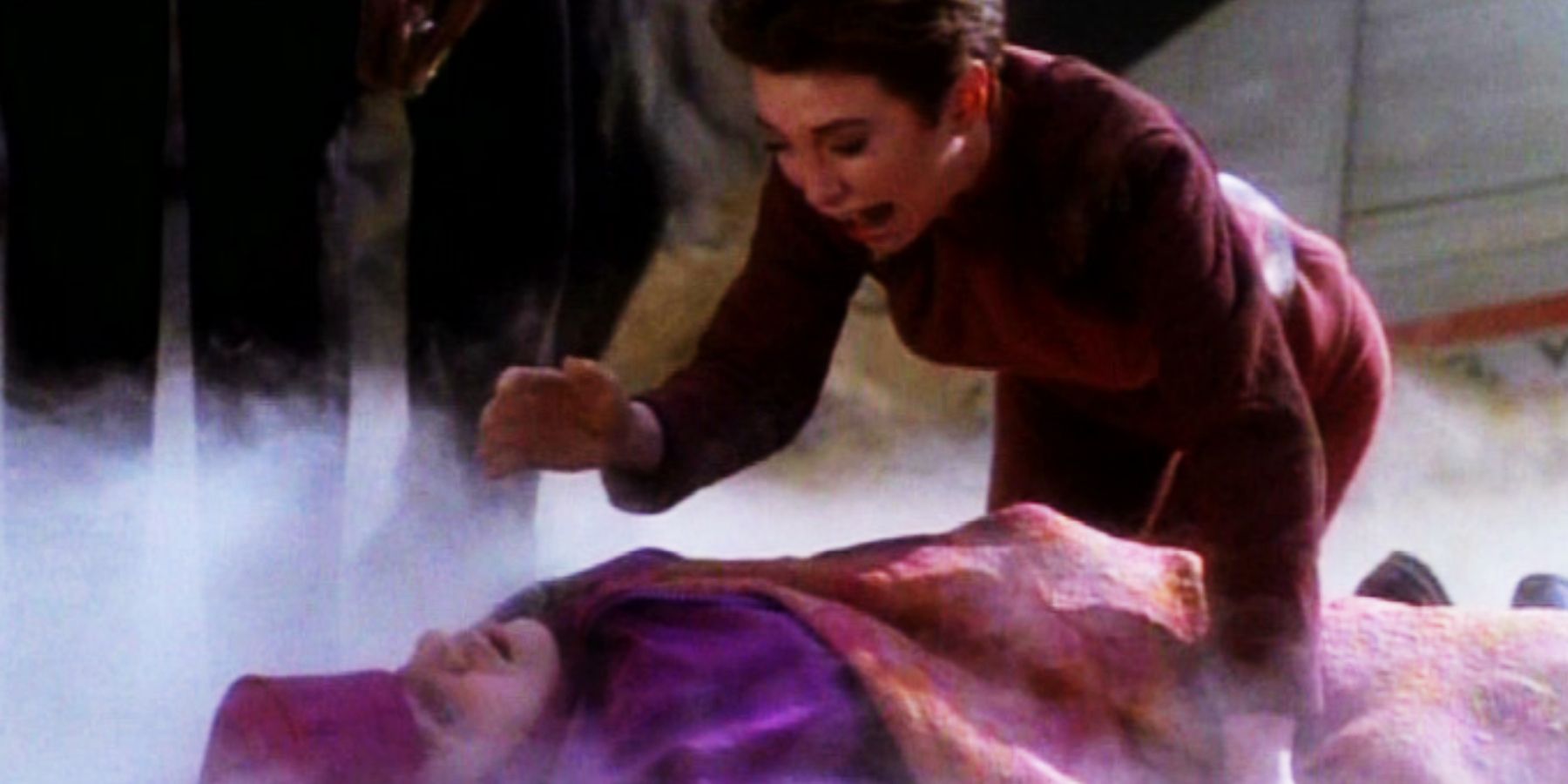
Like most of Deep Space Nine's first season, Star Trek: Deep Space Nine season 1, episode 13, "Battle Lines", is about faith. In very clear ways, it's about Kira Nerys' faith in the Bajoran religion and in Kai Opaka (Camille Saviola). Kai Opaka's death lets us see, perhaps for the first time, the depths of Major Kira's grief, instead of her hotheaded anger. Nana Visitor's performance is raw and real, as it always is, and there's a similar depth of emotion when Opaka is revived by the asteroid the away team lands on.
Less obviously, "Battle Lines" is about the faith of the two warring factions that call the asteroid home. While Kira tries to teach them guerrilla tactics, certain that it's the only way to win, the soldiers prove they're not interested in winning. They already know what the next day will bring: death, resurrection, and more death. The factions' neverending war with each other is just like Kira's internal war in the wake of Bajoran victory; there is success, but at what cost? Kai Opaka stays behind on the asteroid to minister the soldiers, so Bajor will need a new Kai.
6 Star Trek: Deep Space Nine Season 1, Episode 11 - "The Nagus"
DS9 Redefines The Ferengi In Ways TNG Couldn't
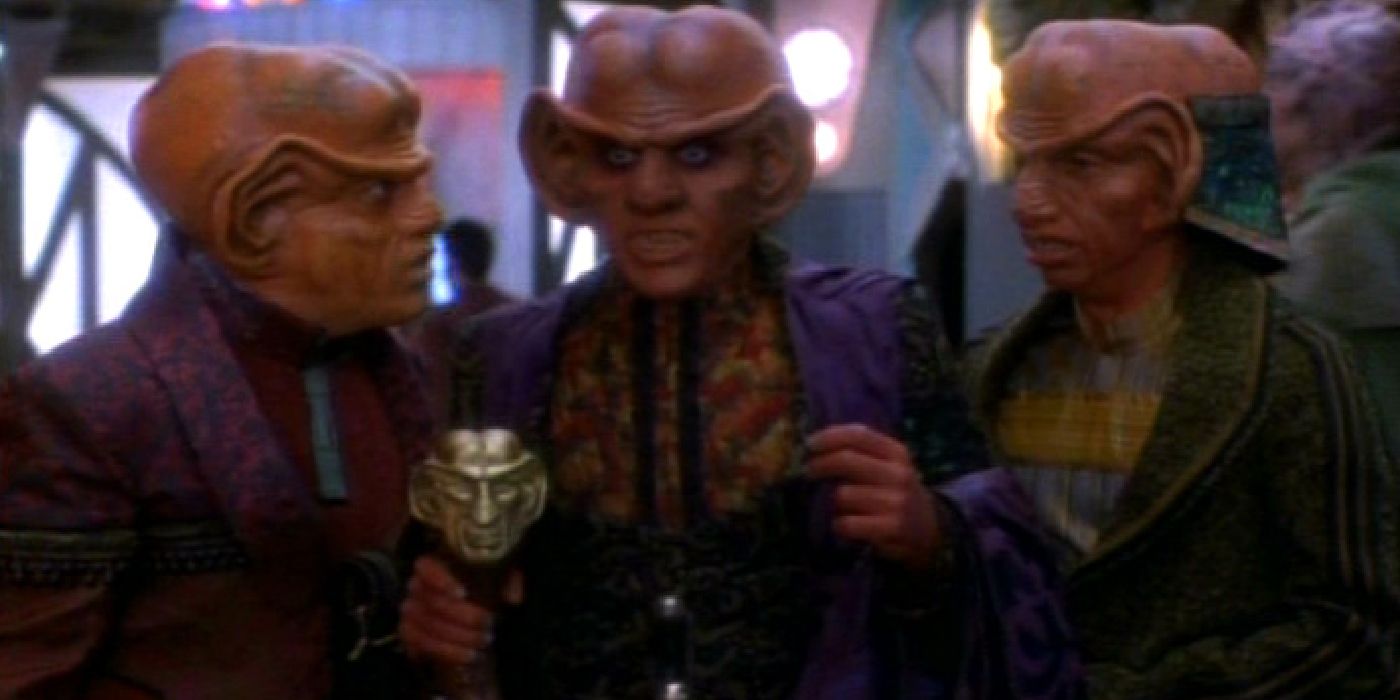
Like so much of Star Trek: Deep Space Nine's first season, "The Nagus" challenges our assumptions based on what we saw in Star Trek: The Next Generation. TNG's Ferengi characters were starship officers, but DS9 shows us that Star Trek's best Ferengi—as they define themselves—are the entrepreneurs. There's no one better to show the archetypal Ferengi than their leader himself. Grand Nagus Zek (Wallace Shawn), but Zek's faked death puts Quark (Armin Shimerman) directly in the paranoid, self-preservationist spotlight so we can see what makes Quark tick.
But it's the B-story of "The Nagus" that exemplifies what Star Trek: Deep Space Nine is really all about, especially in its first season. Sisko assumes he understands the Ferengi based on their reputation, the same way we assume we know them from TNG. Jake and Nog, however, are determined to make their own decisions, and Jake's own Federation ideals won't let him see Nog as anything other than a friend in need. So when it turns out Jake's being evasive because he's teaching Nog to read, that broken-down barrier will to true understanding.
5 Star Trek: Deep Space Nine Season 1, Episode 3 - "Past Prologue"
DS9 Sets Itself Apart With A Slew Of Hidden Agendas
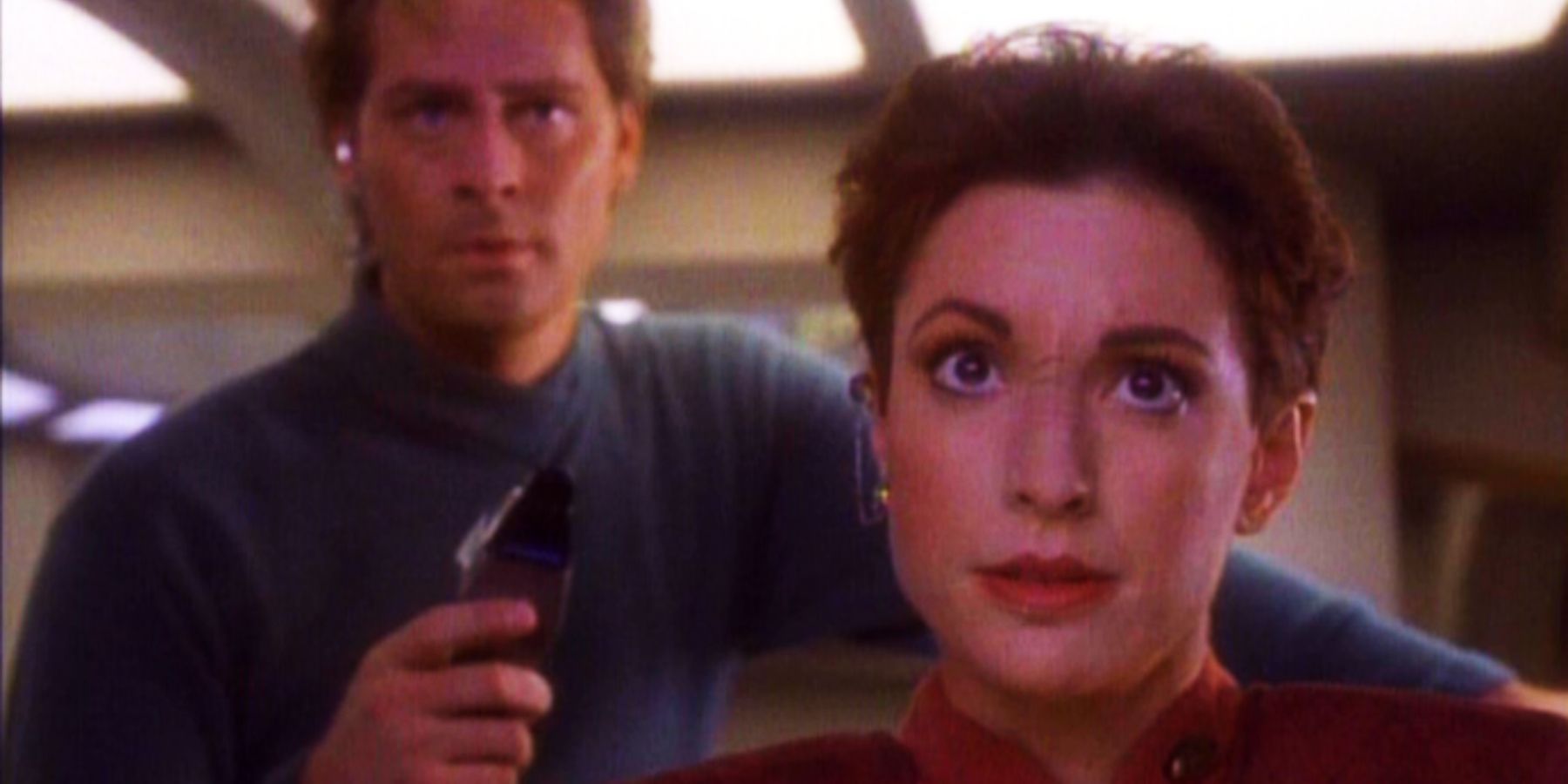
"Past Prologue" was supposed to be the only Star Trek: Deep Space Nine episode that featured plain, simple Garak (Andrew Robinson), but he proved so popular in this single outing that Garak became one of DS9's best recurring characters.
The themes that run throughout DS9 season 1 are everywhere in this episode. Each character is so committed to seeing what they want to see in those around them that they're practically willing to overlook the truth. Kira wants to see Tahna as reformed, whereas Tahna sees Kira as a traitor to Bajor. Commander Sisko's assignment on Deep Space Nine isn't as simple as Benjamin wants it to be. And Bashir wants to see Garak as a spy, which at this point may or may not be true. (It's all true, dear Doctor.)
4 Star Trek: Deep Space Nine Season 1, Episode 6 - "Captive Pursuit"
Miles O'Brien Teaches The Value Of Friendship

Tosk's predator overseers are never named, but their hunt-based culture shares a lot in common with Star Trek: Voyager's Hirogen.
Miles O'Brien readily embodies classic Federation ideals in his friendship with Tosk. Even after the hunter that followed Tosk through the wormhole reveals that Tosk was bred to be prey, O'Brien still believes that Tosk is just like him: an ordinary person trying to live his life. The question O'Brien wrestles with is whether to abide by the predators' values—subjecting Tosk to a life of ridicule—or Miles' own, which Tosk doesn't subscribe to. But Miles O'Brien is nothing if not resourceful, and he finds a secret third option that means, for once, O'Brien actually has a good day.
3 Star Trek: Deep Space Nine Season 1, Episodes 1 & 2 - "Emissary"
Benjamin Sisko Begins A New Chapter
Star Trek: Deep Space Nine opens with a title card recapping TNG's Battle of Wolf 359, because it's the pivotal point in Benjamin Sisko's life that the non-linear Prophets claim he still lives within. It's a beautiful metaphor for Sisko's trauma.
"Emissary" seems to have learned from the shortcomings of Star Trek: The Next Generation's premiere, "Encounter at Farpoint", which was disjointed and artificially extended due to Gene Roddenberry's executive meddling. "Emissary" weaves all its plot threads together capably, making it a genuinely enjoyable Star Trek series premiere that doesn't drag its feet, even with all the political setup it needs to do.
2 Star Trek: Deep Space Nine Season 1, Episode 20 - "In the Hands of the Prophets"
A Clash Of Science, Faith, And Politics Closes Out DS9's First Season
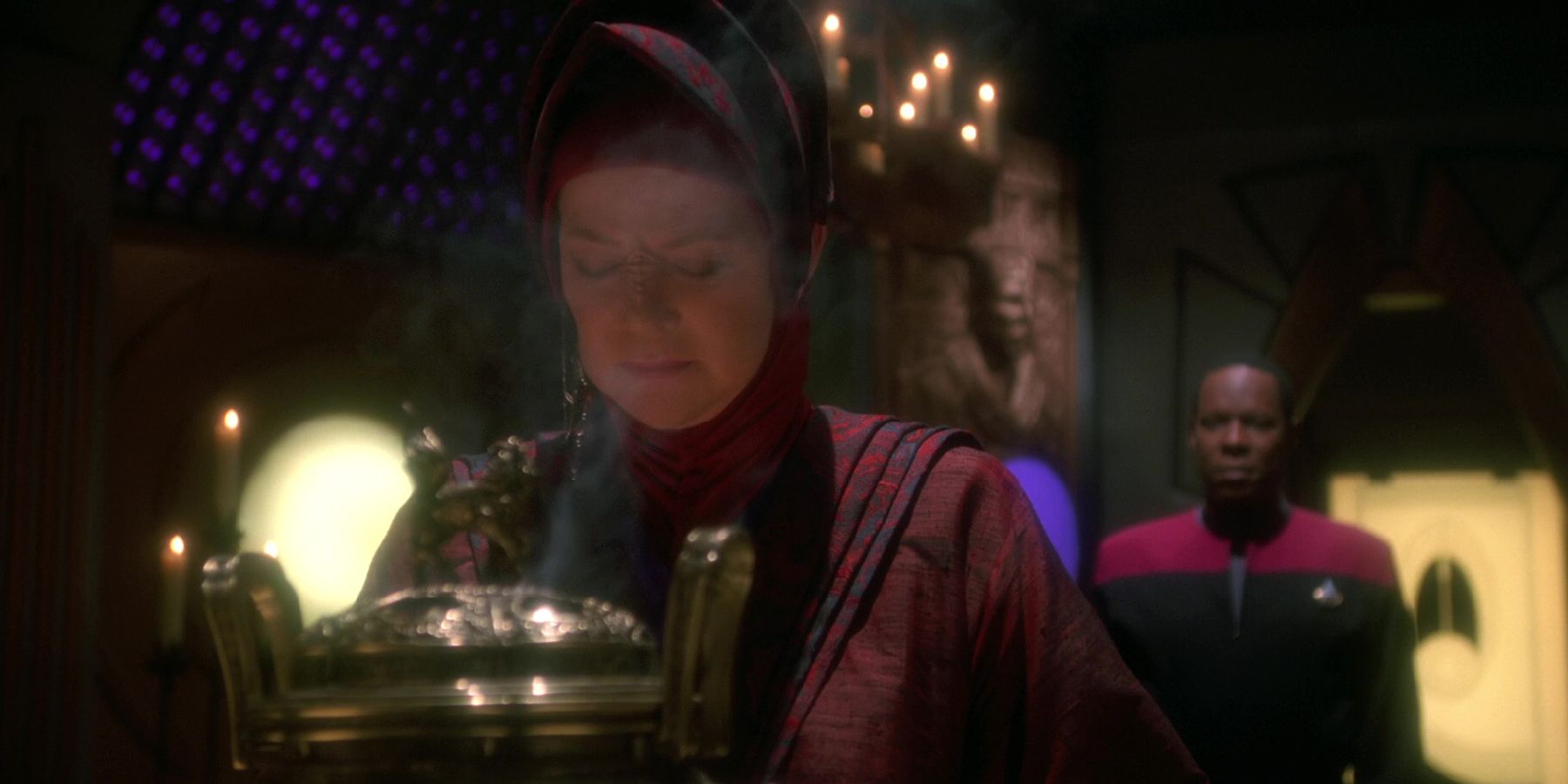
Winn is viscerally, delightfully awful, in all her skin-crawling, two-faced glory.
While Star Trek: Deep Space Nine has hinted at serialization throughout its first season, "In the Hands of the Prophets" shows the real ramifications of a Star Trek show where there's no warping off to the next strange new world next week. Sisko, Kira, and DS9's entire cast have to deal with situations that unfold in real-time, whether those are interpersonal relationships or political conflicts. That means there's real depth to DS9's character growth. Best of all, "In the Hands of the Prophets" does a great job setting up the whopping three-part episode opening DS9's second season.
1 Star Trek: Deep Space Nine Season 1, Episode 19 - "Duet"
Major Kira Confronts A Cardassian War Criminal & Comes Away Changed
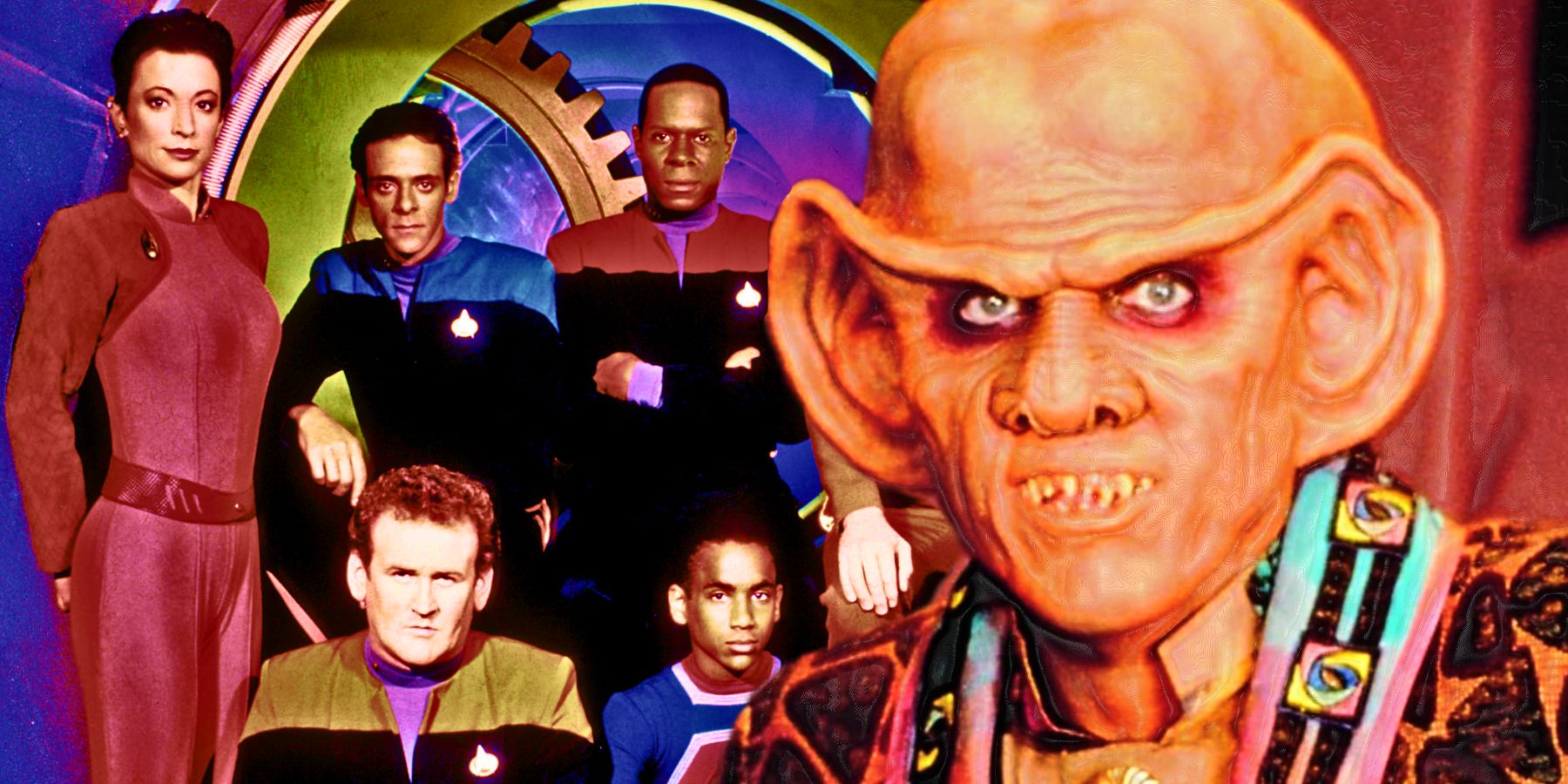
Star Trek: Deep Space Nine has multiple classic Ferengi comedies, but Armin Shimerman's favorite season 1 episode has nothing to do with Quark.
Like Star Trek: Deep Space Nine's later seasons, "Duet" is a deeply layered study of atrocity from multiple perspectives that also acknowledges war is hell for everyone involved. Kira's past with the Bajoran Resistance is riddled with violence, but it's justified. Marritza's file clerk job at the Gallitep labor camp was non-violent, but the guilt of being complicit in unspeakable torture is ruining him from inside. There's no other single episode in all of Deep Space Nine's first season that so excellently sums up the brilliance that Star Trek: Deep Space Nine is known for today.
